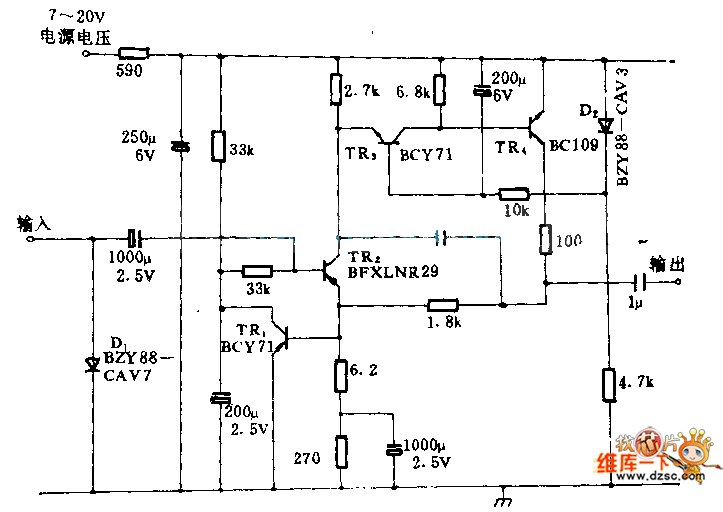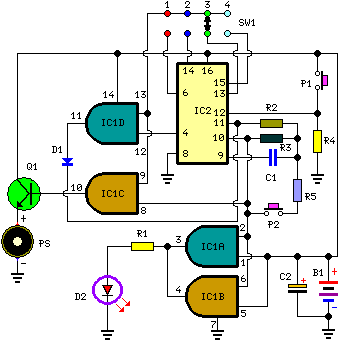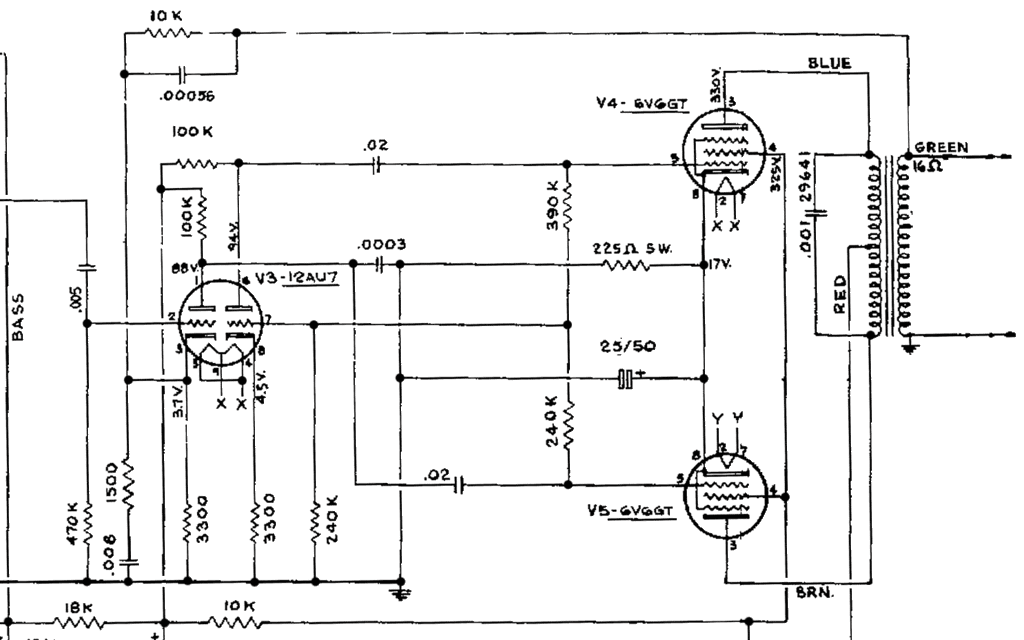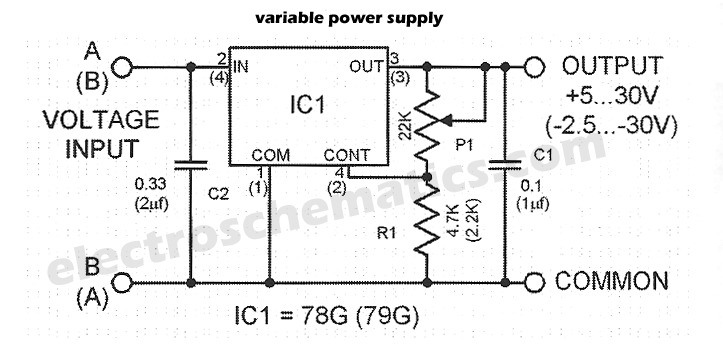
Circuit Diagram Of 60 Hz Frequency Signal Generator
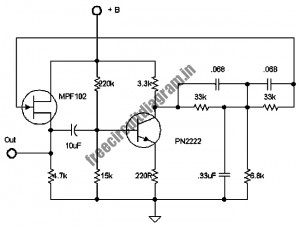
The following circuit illustrates a stable 60 Hz frequency signal generator circuit diagram. Features include a 0.068 µF capacitor incorporated within a feedback loop, allowing for DC-to-AC conversion.
This circuit is designed to generate a stable 60 Hz sine wave output, which is commonly used in various applications such as clock signals, audio signal generation, and power supply synchronization. The primary component responsible for frequency generation is the feedback loop, which includes the 0.068 µF capacitor. This capacitor, along with resistors and possibly an inductor, forms an RC or RLC circuit that determines the oscillation frequency.
In a typical implementation, an operational amplifier (op-amp) may be utilized to amplify the output signal while maintaining stability. The feedback loop ensures that a portion of the output is fed back to the input, creating a condition for sustained oscillations. The values of the resistors and capacitors in the feedback loop are critical, as they set the time constant of the circuit, thereby influencing the frequency of oscillation.
To achieve a clean sine wave output, additional filtering may be employed. This could involve using low-pass filters to eliminate higher harmonics generated during the oscillation process. Furthermore, the circuit may include a power supply section to convert DC voltage into the necessary AC signal, ensuring that the output meets the required specifications for the intended application.
Overall, the design of a stable 60 Hz frequency signal generator circuit is a fundamental aspect of electronic engineering, providing a reliable source of oscillation for various electronic devices and systems.The following circuit Shows about Stable 60 Hz Frequency Signal Generator Circuit Diagram. Features:0.068uF caps inside a feedback loop, DC-to-AC .. 🔗 External reference
This circuit is designed to generate a stable 60 Hz sine wave output, which is commonly used in various applications such as clock signals, audio signal generation, and power supply synchronization. The primary component responsible for frequency generation is the feedback loop, which includes the 0.068 µF capacitor. This capacitor, along with resistors and possibly an inductor, forms an RC or RLC circuit that determines the oscillation frequency.
In a typical implementation, an operational amplifier (op-amp) may be utilized to amplify the output signal while maintaining stability. The feedback loop ensures that a portion of the output is fed back to the input, creating a condition for sustained oscillations. The values of the resistors and capacitors in the feedback loop are critical, as they set the time constant of the circuit, thereby influencing the frequency of oscillation.
To achieve a clean sine wave output, additional filtering may be employed. This could involve using low-pass filters to eliminate higher harmonics generated during the oscillation process. Furthermore, the circuit may include a power supply section to convert DC voltage into the necessary AC signal, ensuring that the output meets the required specifications for the intended application.
Overall, the design of a stable 60 Hz frequency signal generator circuit is a fundamental aspect of electronic engineering, providing a reliable source of oscillation for various electronic devices and systems.The following circuit Shows about Stable 60 Hz Frequency Signal Generator Circuit Diagram. Features:0.068uF caps inside a feedback loop, DC-to-AC .. 🔗 External reference
